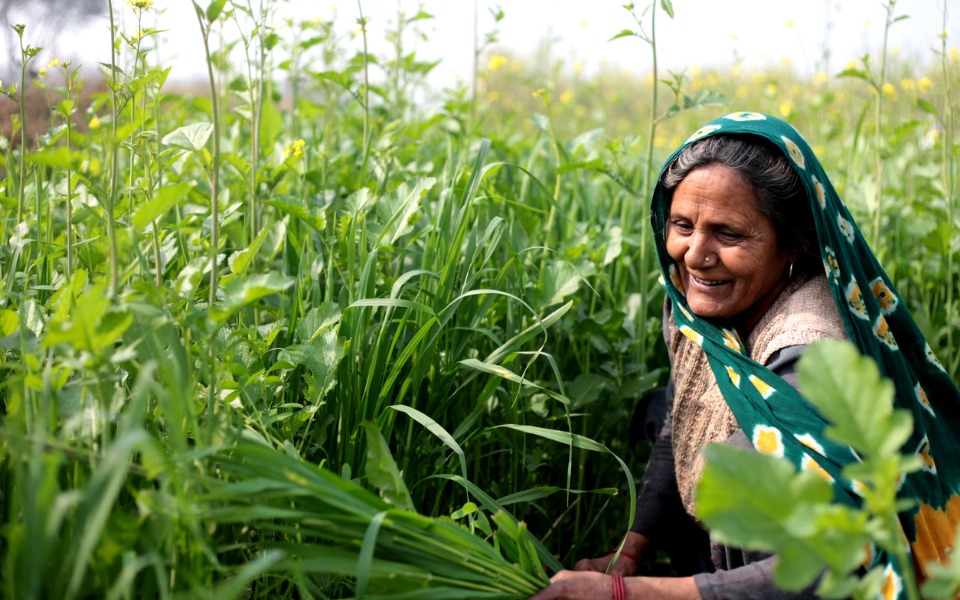
Shift to post-harvest paradigm vital to farm sector revival
India’s large agriculture economy is one that definitely needs a critical boost. The sector contributes to 17 per cent (approx.) of the total GDP.

India’s large agriculture economy is one that definitely needs a critical boost. The sector contributes to 17 per cent (approx.) of the total GDP. But the largest provider of livelihood in the country is plagued by systemic issues like adherence to age-old farm practices, over-dependence on monsoon, wavering prices for farmers, a non-competitive marketing and returns structure, and overwhelming transport and storage issues.
The government has multiple methods at its disposal to address the issues but the Budget remains the singular lever of policy and financial change in terms of reach and impact.
Experts have been seeking the tweaking of the subsidy delivery mechanism, the rebalancing of the procurement programme, and spiking of support prices.
There is a general agreement among experts on the two critical challenges that need focus: shift to a post-harvest paradigm and the maintenance of a comprehensive agriculture database.
Also read: Hike in 2019 budgetary share of no avail as agri sector failed to take off
Harvest management
The key part of post-harvest paradigm comprises hassle-free and safe storage. The nation is lacking on that front and a case in point could be the issue faced by cotton growers in Wardha.
The region is known for its high yield and farmers can only pile up the produce at their homes. This ‘exposed piling’ could erode the quality, thereby driving down the prices.
Farm credit woes
As much as ₹10 lakh crore is given out as agriculture credit every year. This is apart from the Rs. one lakh crore-worth subsidies provided by the government. Also, there are many loan waiver ‘melas’ that the banks hold across the country. The comprehensive data on these ‘melas’ and the total waiver made is unavailable.
In spite of all the cash pumping, agriculture growth still lingers around 2 to 4 per cent. The reason could be that the pumping in of cash for pre-harvest activities has not yielded the requisite results and it is time for a shift to post-harvest investment.
Also read: Union Budget: Free trade in agriculture key to bring India’s golden era back
Wardha example
Let us get to the Wardha cotton grower once again. An average farmer would have over one acre of land. Most farmers in the region also operate small food sheds and take tourists on safari drives in the Bor National Park for extra income. So, they are well hedged to ensure a steady income. Hence, the farmer’s biggest worry is not a good crop but post-harvest issues. He has no support in preserving his harvest to ensure staggered selling and maximise gains.

So, the Wardha farmer/driver/eatery-owner, who graciously drives us around the national park, can only sell off all his produce at the best price offered on a certain day. He lacks the capability to hold the crop. He is in the perpetual hope that the prices hold until he sells off the entire harvest.
This is the story of almost every farmer, barring just a nano bit of them. They all end up selling under stress since they do not have the holding capacity. The line of people who would be on their ‘stress list’ include banks/moneylenders/commission agents/seed dealers and the list goes on, all of them waiting for the harvest to get their cut.
The issue is that the farmer is unable to take advantage of the markets. Policy-makers should think of building capacity for farmers to break the cycle.
The scenario would tilt in favour of the farmer if he had the following:
Storage place
A scientifically designed storage place. The Gramin Bhandaran Yojana, which ran between June 2008 and March 2012, did not attain fruition. If the produce is stored in a warehouse, the banks provide credit against the stock they hold at a subsidised interest rate.
The farmer has the right to sell his produce based on his view about the underlying commodity prices, or even just sell the warehouse receipt to another farmer or sell on exchange – (provided there is substantial lot size).
Also read: Govt pegs 7% rise in onion output; sees production fall in major fruits
The farmer can sell on the exchange with zero transaction charges, provided the warehouse where his produce is stored is certified and is accepted by the exchange as a delivery centre.
Better credit societies
There are about 90,000 Primary Agriculture Credit Societies but most of them are defunct. But it still remains the best last-mile formal credit reach).
In the scenario of a renewed focus on post-harvest management, the biggest shift should happen in the credit cycle. Currently, farmers take loans before even thinking of sowing seeds. So, the credit will have two components, namely, the money for the crop and capital for the next cycle.
The biggest challenge which the formal lending entities often face is their inability to map the land against the documents that are submitted by farmers. Also, verifying whether the farmer has actually sown the crop for which he has taken the loan is another task.
Against the political clamour for loan wavier, farmers do not want loan waiver as they know that it lowers their credit rating and erodes their standing in societies, especially close-knit village set-ups.
Assuming that 10 per cent of the credit is shifted post harvest, in year one and over a period of 5 years, if it can be 50 per cent. The credit effectiveness will be far higher, thereby creating a multiplier effect on the entire rural economy.
Maybe, the road to the five trillion dollar-economy passes through the Gramin Bhandara.

